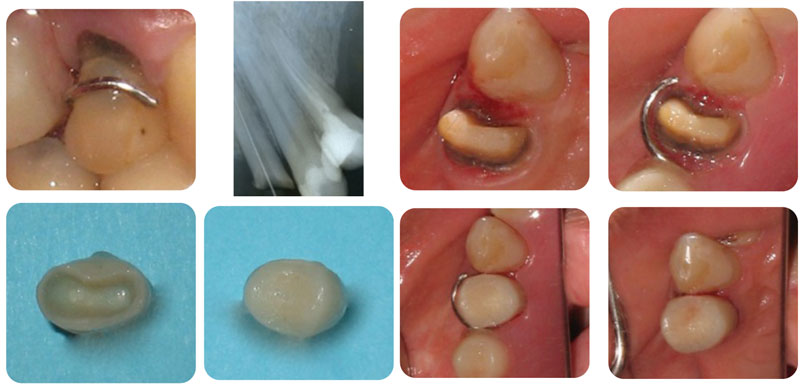The upper left first bicuspid has had endodontic therapy. The radiograph shows a questionable obturation and an apical area with a slightly different bone density. This is a rather typical scenario and in an ideal world, prior to a crown preparation the endodontics might be in need of re-treatment. However, most times these teeth remain asymptomatic.
The other issue here is whether this tooth would need a post/core. Again, realistic practitioners need to evaluate treatment both in terms of what is really necessary and of course the financial limitations/status of the patient.
After crown preparation on this tooth there seemed to be enough tooth structure left to support a prosthetic crown. Please note the anatomy of this first bicuspid. The temporary crown must be made in a way that replicates the proper emergency profile.
In this case the previous composite restoration on the mesial aspect of this tooth failed to establish a proper margin resulting in excessive material and leaving the gingival tissue inflamed and bleeding. In order to establish good visual access the patient was given an injection of xylocaine with 1 : 50, 000 epinephrine as a hemostatic agent. An acrylic crown was fabricated and modified to fit the existing transitional denture ( flipper ).


